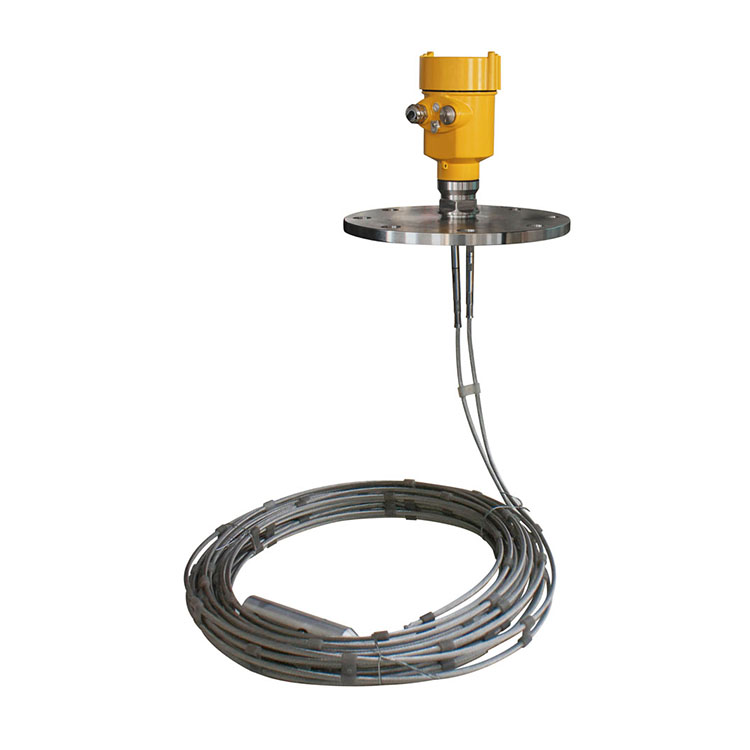Guided wave radar level gauge is easy to install and debug, small maintenance workload, strong adaptability, high performance, high precision, stable and reliable working performance, convenient and safe operation, high protection level, strong anti-interference ability, long service life, and wide range It is applied to the requirements for on-site measurement of liquid level and level production containers in metallurgy, building materials, energy, petrochemical, water conservancy, food and other industries. Compared with capacitive, heavy hammer and other contact instruments, it has incomparable superiority. The transmission of microwave signals is not affected by the atmosphere, so it has a strong advantage when measuring volatile gases, high temperature (350°C), high pressure, steam, vacuum and high dust in the harsh environment of the production process. It is a cost-effective Very high gauge.Good instruments should also be good at use and maintenance, especially precision digital instruments such as guided wave radar level gauges. Good installation, use and maintenance can not only ensure stable measurement of the instrument, but also greatly extend the service life of the instrument. The following will mainly introduce the four common faults and corresponding treatment methods in the use of guided wave radar level gauges (level gauges)!For the treatment of antenna scars:Hanging materials with a small dielectric constant have no effect on the measurement in a dry state, while hanging materials with a high dielectric constant have an effect on the measurement. It can be purged with compressed air (or flushed with clean water), and the cooled compressed air can reduce the temperature of flanges and electrical components. Acidic cleaning fluid can also be used to clean alkaline scars, but level measurement cannot be performed during cleaning.Probe scarring and frequent troubleshooting methods:Increase the installation position of the probe, but sometimes the installation conditions are limited, and when the installation conditions cannot be improved, the method of interlocking the measured value of the material level with the pump of the tank should be used to solve this problem: set the maximum material level to the value Reduce by about 0.5m, when the material level reaches the maximum value, you can stop the feed pump or start the discharge pump.Regarding the influence of foam on measurement:Dry foam and wet foam can reflect radar waves back and have no effect on the measurement; neutral foam will absorb and diffuse the radar waves, which will seriously affect the reflection of the echo or even no echo. When the surface of the medium is thick and thick foam, the measurement error is large or cannot be measured. Under this working condition, the radar level gauge has no advantage, which is the limitation of its application.Corresponding treatment methods for being flooded:
The solution to this problem is to change the radar level gauge to still-pipe type measurement. The still-pipe type radar level gauge is still installed at the original opening. The still-pipe is about 0.2m higher than the exhaust pipe. In this way, even if there is a bad working condition that the slurry overflows from the exhaust pipe, the material will not be damaged. The antenna of the position gauge is submerged by the slurry, and it avoids the interference of the stirrer eddy current and a large amount of steam emerging from the probe, which reduces the damage to the probe. A very good measurement effect. Using the still-pipe measurement method can improve the measurement conditions of the meter and improve the measurement performance of the meter, which has a high value for promotion and application.

Post time: 21-09-21
